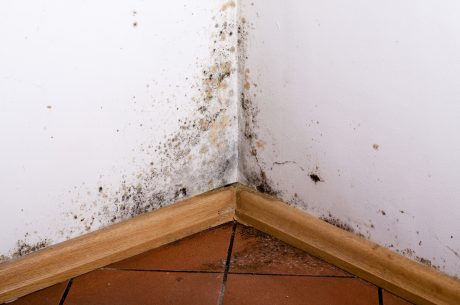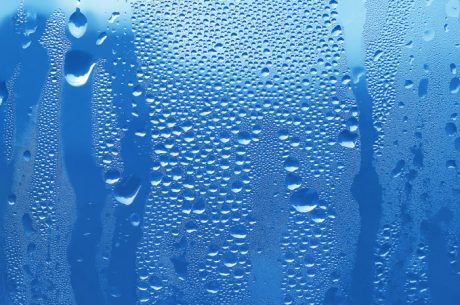Mold in kitchen cabinets is more than just an eyesore—it’s a potential health hazard that can compromise the safety and integrity of your home. As restoration experts, we understand the challenges mold presents and the importance of addressing it promptly and effectively. Whether you’re dealing with a minor outbreak or a more extensive infestation, knowing how to remove mold from kitchen cabinets is essential for maintaining a healthy living environment.
In this guide, we’ll walk you through the process, sharing professional insights and tips to ensure you can tackle mold with confidence and efficiency.
For Mold Removal Service in New Jersey, Call (877) 750-7876
What causes mold growth on kitchen cabinet?
Mold growth on kitchen cabinets is typically caused by a combination of moisture, warmth, and organic material. Here are some common factors that contribute to mold growth in this area:
Humidity: Kitchens are often humid environments due to cooking, boiling water, and dishwashing. High humidity levels can provide the perfect conditions for mold to thrive.
Leaks and Spills: Water leaks from plumbing fixtures, sinks, or appliances can lead to moisture accumulation in cabinets. Even small spills that are not promptly cleaned up can contribute to mold growth.
Poor Ventilation: Inadequate ventilation prevents moisture from dissipating, creating a damp environment conducive to mold. Kitchens without proper exhaust fans or windows are particularly vulnerable.
Organic Material: Mold feeds on organic materials such as wood, paper, and food particles. Kitchen cabinets, often made of wood or wood composites, provide an ideal substrate for mold growth.
Condensation: Temperature fluctuations can cause condensation to form on surfaces, including the inside of cabinets. This moisture can create a breeding ground for mold if not managed properly.
Neglected Cleaning: Regular cleaning helps prevent mold growth by removing dust, dirt, and food residues. Neglecting these areas can provide mold with the nutrients it needs to grow.
Tools checklist for Mold Removal in the Kitchen
- Gloves
- Safety goggles
- N95 mask
- Long-sleeved clothing
- Mold remover or bleach
- White vinegar or hydrogen peroxide
- Mild detergent
- Bucket and spray bottle
- Soft-bristle brush
- Sponge and scrub pads
- Toothbrush
- Cloths or paper towels
- Dehumidifier and fan
- Plastic sheeting and painter’s tape
- Trash bags
- Vacuum cleaner with HEPA filter
Why you should remove Mold from the Kitchen
Health Risks: Mold can cause allergic reactions, respiratory problems, and other health issues, particularly in those with asthma or compromised immune systems.
Structural Damage: Mold can weaken and deteriorate the materials in your kitchen cabinets and other affected areas, leading to costly repairs.
Unpleasant Odors: Mold produces a musty smell that can permeate your kitchen and home, making the environment unpleasant.
Food Safety: Mold spores can contaminate food, posing a risk to your health and making food storage unsafe.
Aesthetic Impact: Mold growth is unsightly and can damage the appearance of your kitchen, reducing the overall appeal of your home.
Property Value: Persistent mold issues can decrease the value of your property and deter potential buyers if you decide to sell your home.
How to Remove Mold in Kitchen Cabinets
- Prepare and Protect
Wear Protective Gear: Put on gloves, safety goggles, an N95 mask, and long-sleeved clothing to protect yourself from mold exposure.
Isolate the Area: Use plastic sheeting and painter’s tape to seal off the affected area to prevent mold spores from spreading. - Remove Contents
Empty the Cabinets: Take out all items from the cabinets. Discard any items that are moldy or contaminated. - Clean the Cabinets
Initial Cleaning: Mix a solution of mild detergent and water. Use a soft-bristle brush or sponge to scrub the affected areas.
Apply Mold Remover: Spray a mold remover, white vinegar, or hydrogen peroxide onto the moldy surfaces. Let it sit for 10-15 minutes.
Scrub Again: Scrub the surfaces again to remove the mold. Use a toothbrush for small or hard-to-reach areas. - Rinse and Dry
Rinse: Wipe down the cleaned surfaces with a damp cloth to remove any cleaning residue.
Dry Thoroughly: Use absorbent cloths or paper towels to dry the cabinets. Place a fan and/or dehumidifier in the area to ensure complete drying. - Prevent Future Mold Growth
Improve Ventilation: Ensure good airflow in the kitchen by using exhaust fans or opening windows.
Fix Leaks: Repair any plumbing leaks or water damage promptly.
Reduce Humidity: Use a dehumidifier to maintain lower humidity levels.
Regular Cleaning: Clean your cabinets regularly and promptly wipe up any spills.
Call Us for Expert Mold Removal in New Jersey – (877) 750-7876
Living in a mold-infested home can be a nightmare. Fortunately, PuroClean Emergency Recovery Services New Jersey is here to help. With years of experience and a team of skilled professionals, we have the expertise you need to eliminate and prevent mold in your home and give you a fresh start. From identifying the cause to implementing effective remediation strategies, our team has the knowledge and tools to make your home mold-free. Don’t put off your mold concerns any longer. Get in touch with us today at (877) 750-7876 and start enjoying a cleaner, fresher, and healthier living space!
Conclusion
Removing mold from kitchen cabinets is a crucial task that ensures the safety, health, and longevity of your home. By taking prompt action and using the right tools and techniques, you can effectively eliminate mold and prevent it from recurring. Remember to prioritize safety by wearing protective gear and isolating the affected area. Regular maintenance and good kitchen practices, such as proper ventilation and immediate spill cleanup, will help keep your kitchen mold-free. With these steps, you’ll maintain a clean, healthy kitchen environment, protecting both your home and your loved ones.




 PuroClean Emergency Recovery Services
PuroClean Emergency Recovery Services